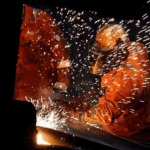Hey there, photography lovers! If you’ve invested in a gorgeous leather camera strap, you’re already on the right track to combining style with function. But let’s be real, leather isn’t just a pretty accessory; it’s a material that needs some love to keep it looking sharp and performing well. I’ve been using leather straps for years, and I’ve learned a thing or two about keeping them in top shape. So, grab your strap, and let’s dive into some easy, practical tips to ensure its longevity. Trust me, with a little care, your strap will be with you for countless shoots!
Why Leather Camera Straps Deserve Extra Attention
Leather is a natural material, which is what makes it so special. It’s durable, ages beautifully, and feels luxurious against your skin. But because it’s natural, it’s also prone to wear if you don’t treat it right. Things like moisture, sunlight, and rough handling can dry it out, crack it, or fade its rich color. A well-maintained leather strap doesn’t just look good—it also keeps your camera secure, which is the whole point, right? Whether you’re rocking a single camera harness or a dual setup, these care tips will help you protect your investment and keep it looking as good as the day you bought it.
Keep It Clean: The First Step to Longevity
The first rule of leather care is simple—keep it clean! Over time, dust, sweat, and oils from your skin can build up on the strap, especially if you’re out shooting in humid or dusty environments. I learned this the hard way after a beach shoot left my strap gritty and stained. To clean it, start by wiping the surface with a soft, slightly damp cloth. Don’t soak the leather; just a little moisture will do the trick. If there are stubborn spots, a tiny drop of mild soap—like baby shampoo—can help, but be gentle. After cleaning, wipe it down with a dry cloth to remove any leftover moisture. This quick routine, done every month or after a particularly messy shoot, will prevent dirt from sinking in and causing damage.
Condition Regularly: Keep That Leather Supple
Leather can dry out over time, especially if you’re shooting in sunny or dry climates. When it gets too dry, it loses its flexibility, and that’s when cracks start to appear. To keep your strap soft and supple, you’ll want to condition it every few months. I swear by leather conditioner—it’s like a moisturizer for your strap! Pick a high-quality leather conditioner (avoid anything with harsh chemicals), and apply a small amount with a soft cloth. Rub it in gently, making sure to cover the entire surface, including the edges. Let it sit for a few hours so the leather can absorb the conditioner, then buff it with a clean cloth to bring back its shine. I usually do this on a quiet evening while catching up on a podcast—it’s oddly satisfying to see the leather come back to life!
Protect Against the Elements: Weatherproofing Tips
Leather and water don’t mix well, and neither do leather and intense sunlight. If you’re shooting outdoors a lot, your strap is bound to face some weather challenges. I’ve had a few close calls with sudden rain during outdoor sessions, so I’ve learned to be proactive. First, try to avoid getting your strap wet whenever possible. If you know you’ll be in a rainy spot, tuck your camera under a jacket or use a rain cover. If it does get wet, don’t panic—just pat it dry with a soft towel and let it air dry naturally, away from heat sources like radiators, which can make the leather brittle.
Sunlight is another culprit—it can fade the color and dry out the leather. When you’re not using your strap, store it in a cool, shaded spot, like a drawer or a camera bag. Some folks also use a leather protectant spray to add a layer of water resistance, but test it on a small area first to make sure it doesn’t change the color. These little habits can go a long way in keeping your strap ready for action, no matter the weather.
Handle with Care: Avoiding Unnecessary Wear
Leather is tough, but it’s not invincible. The way you handle your strap day-to-day plays a big role in how long it lasts. One thing I’ve noticed is that rough handling—like tossing your camera into a bag with the strap dangling—can lead to scratches or scuffs. Try to be mindful when you’re packing up after a shoot. If your strap has metal buckles or attachments, make sure they don’t rub against the leather too much, as they can leave marks over time.
Another tip is to avoid overloading your strap. If you’ve got a super heavy lens or camera body, check the weight limit of your strap to make sure it can handle the load. Overstretching can weaken the leather and cause it to deform. I also like to give my strap a break every now and then—if I’m not shooting for a few days, I take it off my camera and let it rest flat. It’s a small thing, but it helps the leather maintain its shape.
Storage Matters: Where to Keep Your Strap
How you store your leather camera strap when it’s not in use can make a huge difference. I used to just leave mine attached to my camera, thrown into a bag, but I noticed the leather started to crease in weird spots. Now, I’m a bit more intentional. If you’re not using your strap for a while, store it in a dry, cool place away from direct sunlight. A breathable fabric pouch works great—don’t use plastic bags, as they can trap moisture and lead to mold.
If your strap is detachable, consider laying it flat or rolling it loosely to avoid creases. And here’s a pro tip: keep it away from strong odors, like perfumes or food, because leather can absorb smells easily. I once stored mine near a scented candle, and let’s just say my strap smelled like lavender for weeks! Proper storage keeps your strap looking fresh and ready for your next adventure.
A Little Love Goes a Long Way
Caring for your leather camera strap doesn’t have to be a chore—it’s all about building a few simple habits into your routine. With regular cleaning, conditioning, and mindful handling, your strap will not only last for years but also develop a beautiful patina that tells the story of your photography journey. I’ve got a strap that’s been with me for over five years now, and every time I pick it up, I’m reminded of the shoots we’ve been through together. It’s more than just gear—it’s a companion.
So, take a moment to give your leather strap some TLC. Whether you’re using it for a quick street shoot or a full-day event, a well-cared-for strap will keep your camera safe and make you look good doing it. Got any strap care tips of your own? I’d love to hear what’s worked for you—let’s keep the conversation going!

















